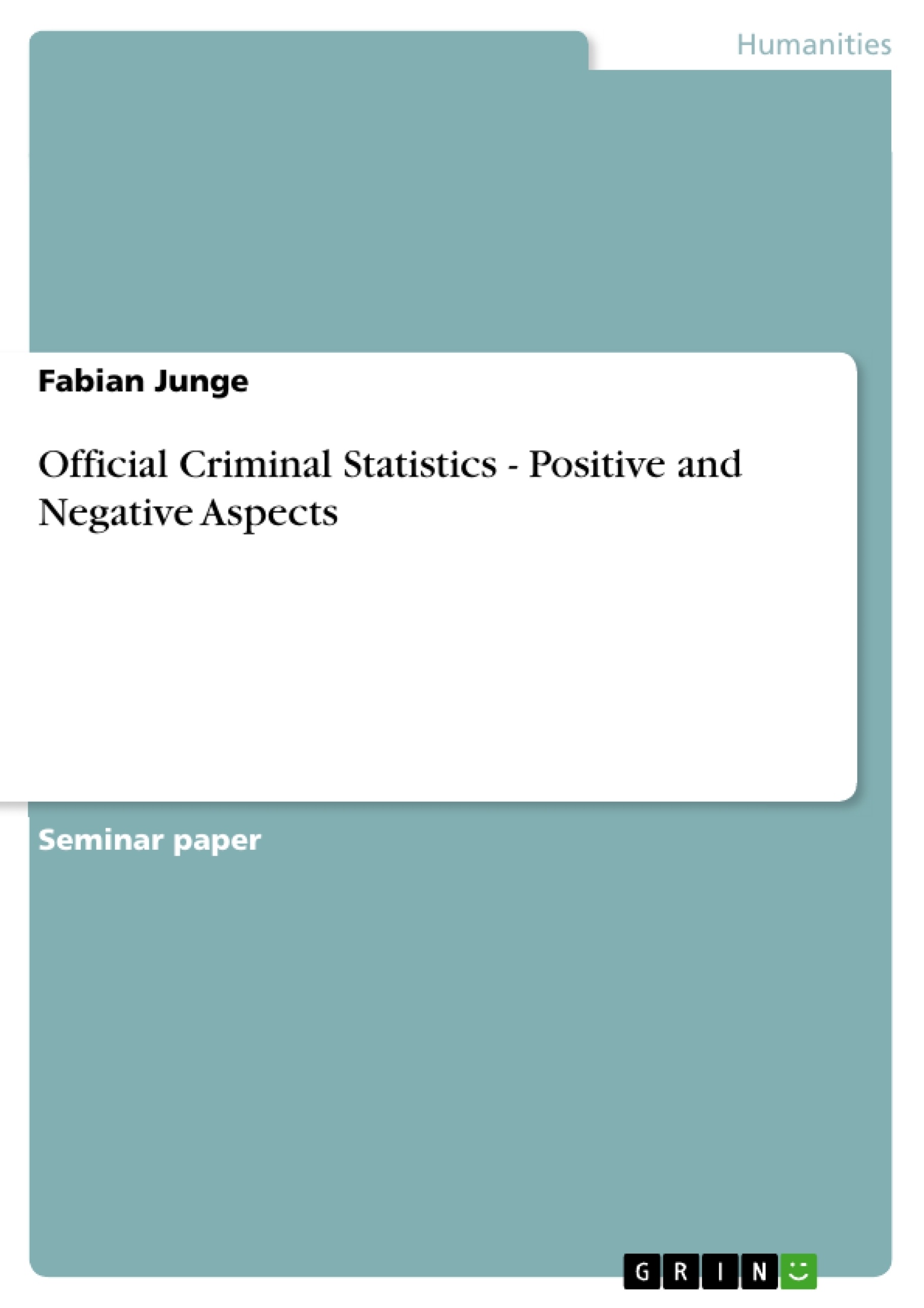Statistics are one of the basic instruments on which our society relies. They are for instance used to detect trends or to develop theories on specific topics, or in order to get public-relevant information about the current situation in specific countries. Apart from that, also governments use statistics so as to make certain decisions or to develop long-term strategies on particular issues. Everything is at least in a small way affected by statistical data and their subsequent conclusions. In order to support the importance of official statistics, the Federal Constitutional Court of Germany stated in its decision on the census of population that official statistics are an indispensable basis for a welfare state.
All this also applies to the official criminal statistics. Governments, for example, use them to improve the performance of their own criminal justice system to achieve a safer environment for their citizens . The public is interested in the data to find out about the crime risks in their neighborhood and how the authorities are dealing with it.
Criminal statistics are frequently used by politicians or in the mass media to substantiate an allegation without challenging the data. By doing this, it is assumed that the statistics are infallible and present a full image of the extent of crime This point, however, has to be critically judged, since official statistics seem to be “both partial and subjectively constructed” .
In this paper, I will outline the positive and negative aspects of official criminal statistics. Moreover, I will discuss, if they have the ability to represent the full extent of crime or not.
Table of Contents
- A) Preliminary Considerations
- I. Distinction between criminal statistics
- II. International crime comparisons
- B) The main types of offical criminal statistics
- I. Official police and court statistics
- 1. Criminal Statistics in England and Wales
- 2. The Uniform Crime Reporting Program in the USA
- II. Official victimization surveys
- 1. National Crime Victimization Survey in the USA
- 2. The British Crime Survey
- I. Official police and court statistics
- C) A critical view on official criminal statistics
- I. Official police and court statistics
- 1. Reporting a crime to the police
- 2. Recording of a crime by the police
- 3. Critique of the Uniform Crime Reports
- 4. Critique of the Criminal Statistics in England and Wales
- II. Victimization surveys
- I. Official police and court statistics
- D) Conclusion
Objectives and Key Themes
This paper explores the use and limitations of official criminal statistics. The main objective is to assess the effectiveness of these statistics in representing the full extent of crime and to discuss whether they can be considered a reliable source for understanding criminal trends and developing effective crime prevention strategies.- The distinction between official criminal statistics and other types of crime data.
- The strengths and weaknesses of official police and court statistics, including examples from England and Wales and the United States.
- The role and limitations of victimization surveys in capturing crime data, particularly in the USA and the UK.
- A critical analysis of the factors that influence the accuracy and reliability of official criminal statistics.
- The use of official criminal statistics in policy-making and public discourse.
Chapter Summaries
This chapter introduces the concept of official criminal statistics and their importance in shaping our understanding of crime and society. It examines the role of statistics in government decision-making, public policy, and public perception of crime. The chapter highlights the use of official statistics for detecting crime trends, developing crime prevention strategies, and informing the public about crime risks. This chapter outlines the main types of official criminal statistics, focusing on police and court statistics, and victimization surveys. It explores the methodologies used in gathering data, including examples from England and Wales, the United States, and the UK. The chapter also discusses the strengths and limitations of each type of statistic. This chapter provides a critical assessment of official criminal statistics, exploring the potential biases and inaccuracies that can arise in the reporting and recording of crime. It examines the factors that influence the accuracy of official statistics, such as crime reporting behaviors, police recording practices, and the limitations of victimization surveys.Keywords
This paper focuses on the following key themes: official criminal statistics, police and court statistics, victimization surveys, crime reporting, crime recording, data accuracy, reliability, crime prevention, policy-making, public discourse, and criminal trends.- Quote paper
- Fabian Junge (Author), 2010, Official Criminal Statistics - Positive and Negative Aspects, Munich, GRIN Verlag, https://www.grin.com/document/178384



